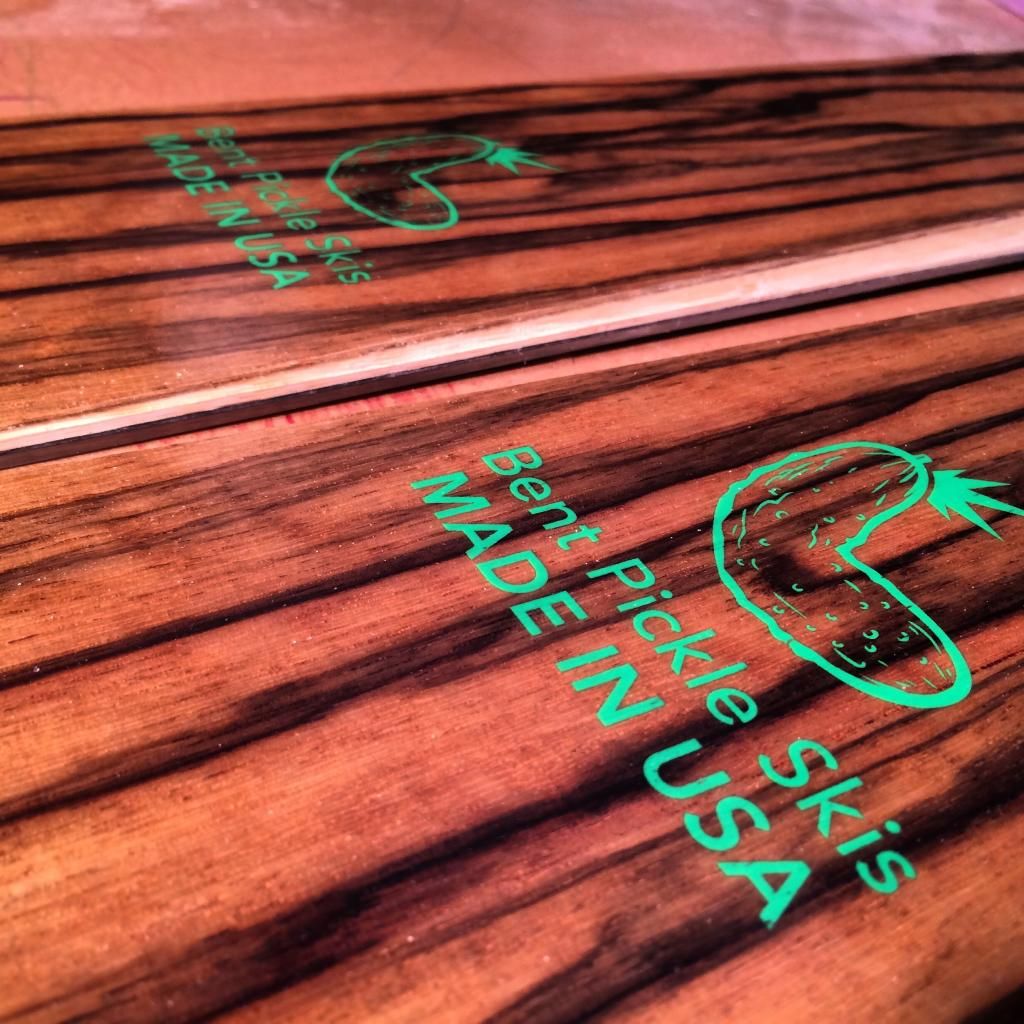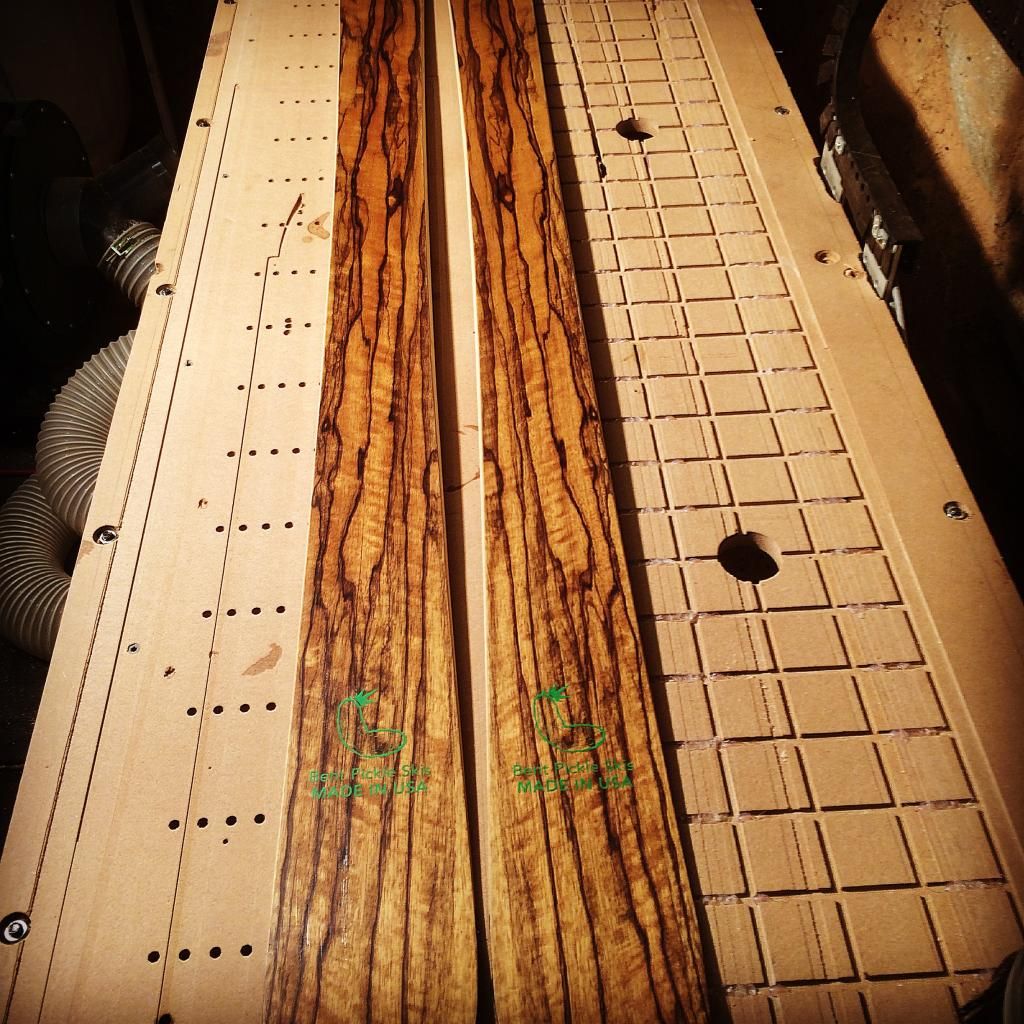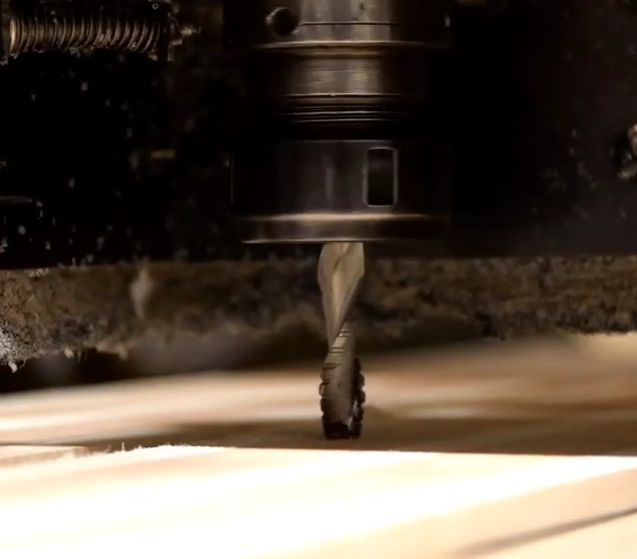Page 2 of 3
Posted: Mon Dec 22, 2014 1:30 pm
by skidesmond
I've made skis for my daughters and the skis were 2.5-10-2.5. I used poplar for the core and 22oz FG. Ski length 152cm. They love 'em.
Posted: Sat Dec 27, 2014 12:18 pm
by skimann20
As always, thanks for the useful info.
Here a few photos for your viewing pleasure.
I had the logo screen printed onto the ski. Try walking into a place that only screen prints t-shirts and explain to them what you want to do to a pair of skis... they were open to the idea but hammered me on the cost because it was a "one off".

Finished product. I'm very happy with the way they came out. not to much I'd change with the process. overall, I'm happy with the veneer top sheets. I was surprised how much more stiffness they add to the ski compared to the normal plastic top sheet.

Posted: Sat Dec 27, 2014 2:01 pm
by skidesmond
Nice! Whats kind of veneer is that? Looks awesome.
Posted: Sat Dec 27, 2014 2:23 pm
by skimann20
Wood Veneer is: Black Limba usually used to make guitars but looks just as sexy on skis, if not better.
Posted: Mon Dec 29, 2014 5:13 pm
by vinman
Veneer definitely adds stiffness. Reliable intel from a buddy in the big time snowboard biz says they decrease core thickness by .2-.4 mm to compensate.
I love the black limba, beautiful stuff.
Posted: Mon Dec 29, 2014 7:44 pm
by skimann20
vinman wrote:Veneer definitely adds stiffness. Reliable intel from a buddy in the big time snowboard biz says they decrease core thickness by .2-.4 mm to compensate.
I love the black limba, beautiful stuff.
Vin: I'll put that little piece of info into my "build bible". I can totally believe it! wood fibers are stronger and more porous than plastic, this totally makes sense. black limba is "cheep" too.
For everyone that is thinking about going with veneer. It's a TON of work. granted I'm crazy anal when it comes to finishing wood (I use to build furniture before ski building, and furniture building was way easier) Its a lot more work than the plastic top sheets.
For all you new builders: start a "Build Bible" yesterday. I wish I had more in mine... I fell like I'm always backfilling it and wishing I wrote more down when I started. Write everything down. EVERYTHING. bit sizes, amount removed per pass, feed rates, temp/humidity of basement/shop on layup, how many days/hours before ski layup your bases where cut... EVERYTHING! Its better to have too much info than not enough. (I've never said why did I write all this info down, I don't need it...)
Posted: Fri Feb 13, 2015 8:44 pm
by skimann20
here is my latest batch.

I'm really happy how these came out. this photo is before sidewall profile and top cover removal.
One observation is that my bases for the most part are very flat but slightly base high in the middle in just the front tip section say maybe 6" of front edge contact area. thoughts? too much/little pressure in tip zone? bottom curling before top and pushing base up? i cure under pressure until ski gets down to ~110F.
Posted: Sat Feb 14, 2015 5:05 am
by vinman
Could be a couple things for the base high problem. Mold conformity, too little pressure, rabbet depth, or maybe heat. I'd look at those first 3 things first.
Posted: Sat Feb 14, 2015 5:57 am
by skimann20
hey Vin,
for sure not rabbet depth... MM has beat that one in my head enough ;-)
Mold is tight, I cut it on the CNC and there is no variability. I see it in both skis equally so it has to be something they are experiencing during the press. I normally press at 55psi. I may step it up to 60 to see if goes away. Top molt is fairly tight, could be slightly tighter but not much. So heat? i step the bottom 10F hotter the entire ramp to 180. Anyone else see this?
Posted: Sat Feb 14, 2015 6:32 am
by skimann20
I was looking around to see what the "Big Boys" use to profile their skis with. check out the one that J skis uses. this thing is beastly:

I currently use 1.5" with good results.
http://www.rockler.com/straight-router- ... k-2-fluted
I was thinking about buying something like this:
http://www.toolstoday.com/p-6160-mini-i ... esign.aspx
but after seeing what J skis uses I'm thinking about going a different direction. does anyone use one like J?
Posted: Sat Feb 14, 2015 10:47 am
by twizzstyle
That just looks like a roughing end mill? Is that what you meant to post? That won't really do much for profiling?
I use a 1.5" straight flute router bit too, seems fine.
Posted: Sat Feb 14, 2015 12:21 pm
by skimann20
twizzstyle wrote:That just looks like a roughing end mill? Is that what you meant to post? That won't really do much for profiling?
I use a 1.5" straight flute router bit too, seems fine.
yup thats what i meant to post. they profiled out cut the shape of the core with this. I'll see if I can dig up the video again.
Posted: Sat Feb 14, 2015 12:38 pm
by Richuk
Pressure, or lack of pressure around the tips can cause an issue with raised edges. Adjust you press design to include linear activators ... or a set of four bicycle pumps, whatever suits your budget. Otherwise, you are fighting against the edge set .. leading to internal tensions raising the edge set.
You want to apply heat evenly along the length of the ski. The tips are generally slower to heat up, they then over take to body of the ski at around 60oC. Per your description, they might be over-heating. There's nothing wrong with a relatively slow ramp rate.
Pressure can be used to adjust the thickness and quality of the laminate, with a view to achieving the best mechanical properties from the materials used. If you are using a wood core. It is worthwhile running a sample core through the press and measuring the thickness of the laminate achieved at 55psi. You can adjust amount of epoxy and pressure accordingly. Basic rule of thumb, ramp under pressure with the core in mind - let it soak up the epoxy as required, press the laminate, adding sufficient pressure to obtain the final thickness.
No disrespect to your sources Vin, but decreasing by 0.4mm to compensate for veneer is excessive. It might not be too noticeable mid-body, but the tips 0.4 amounts to a substantial reduction in thickness.
Posted: Sat Feb 14, 2015 3:12 pm
by vinman
Rich, yes I should have qualified that with waist thickness. My bad. I would keep the tip the same thickness to match tip spacer height.
Posted: Sat Feb 14, 2015 4:47 pm
by gav wa
Twizz is right about that cutting tool. Its a roughing end mill. Or what some call a ripper. The grooves on the cutting edge are designed to break up the swarf chips so you can do a much deeper cut along the side of the tool. Totally the opposite of what you need when profiling. From the photo you can also tell it is a 2 flute solic carbide cutter, so it would still have 1 flute that cuts over center at the bottom so profiling can be done with it but the tool was designed for something totally different. Many much better options out there for profile cutting.



